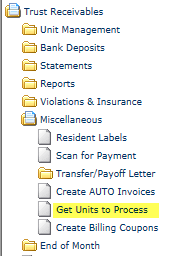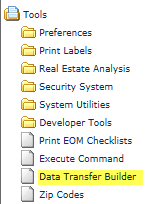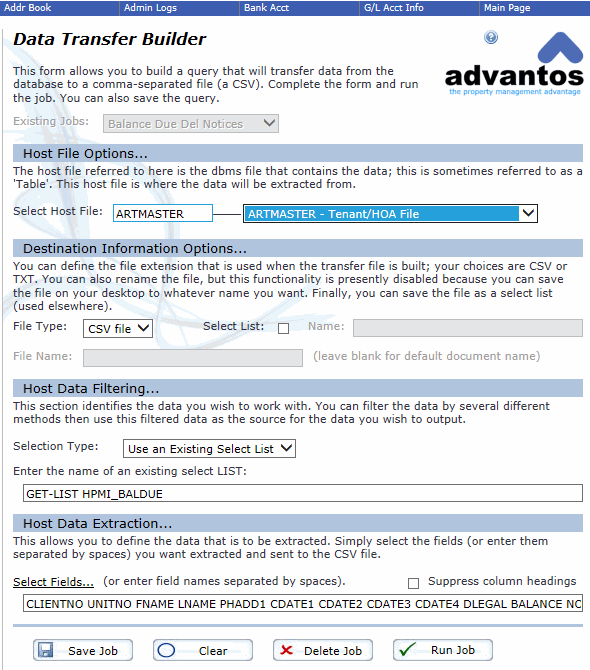- Advantos ERP v7 Online Documentation
- Admin Manual
- Contact Us
Letter Generation
|
Generating Letters for T/RGenerating letters from Advantos data is accomplished by using Microsoft Office; actually any word processing software that uses the "mail-merge" functionality will do. The process is simple; you filter the data entity(s) you want, such as clients, units, vendors, customers, employees, or address book entries, extract the subsidiary data you wish to use in the mail-merge document, place this data into a Microsoft Excel format, then use the Excel document as a "data-source" for the mail-merge output. The order of steps we take to accomplish this task has everything to do with Microsoft Office and little to do with the software preparing data to be used by it. The Letter...The first step in this process is to prepare a mail-merge letter. If you look on the internet for help with this task, see the help for Microsoft Word on the Microsoft website. An example of a mail-merge letter in Microsoft Word, could look like this example letter The Data Filter...From the Trust Receivables menu select the "Get Units to Process" option.
This builds the list of units to populate the spreadsheet via the Data Transfer Builder, located in the Tools sub-menu. What you want to do is select the delinquency type you wish to address, then the invoice date of the delinquent dues, then define a name for the list of filtered items, then select the client#(s).
By making the appropriate selection you will access the correct T/R units to pass into the customized mail-merge process. The Excel File...After the filter list is created you should access the "Data Transfer Builder" process to complete the creation of the defined data to the Excel spreadsheet file.
You normally assign a simple name to the appropriate script and use that list name in the Data Transfer script. Most of the data sent to mail-merge letters for delinquencies is the same, so there is only need for a single script to use for most delinquent letters.
An interesting point to note here is that it is often only necessary to build transfer scripts for each individual type of mail-merge letters you wish, because each type of letter needs the same data for all letters of each mail-merge type. |





